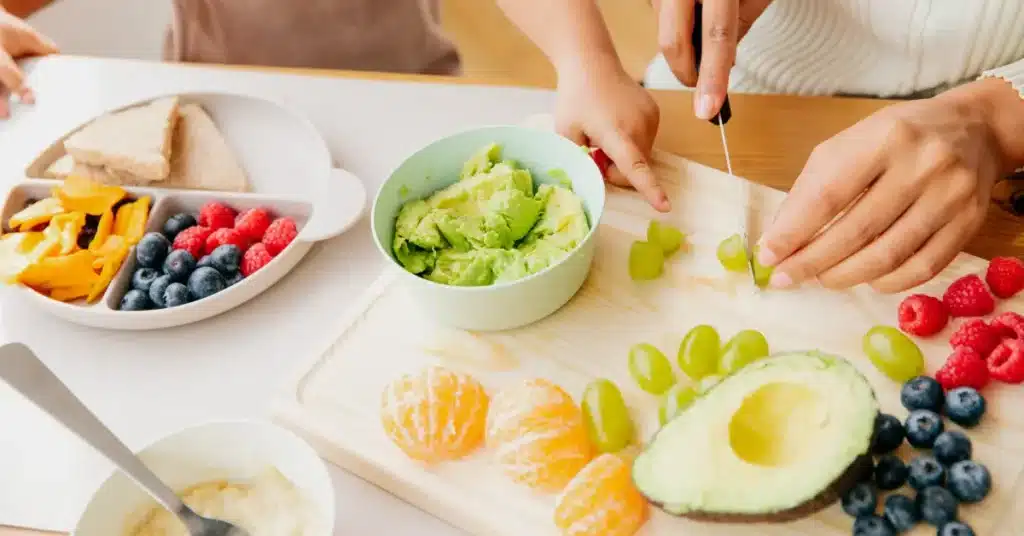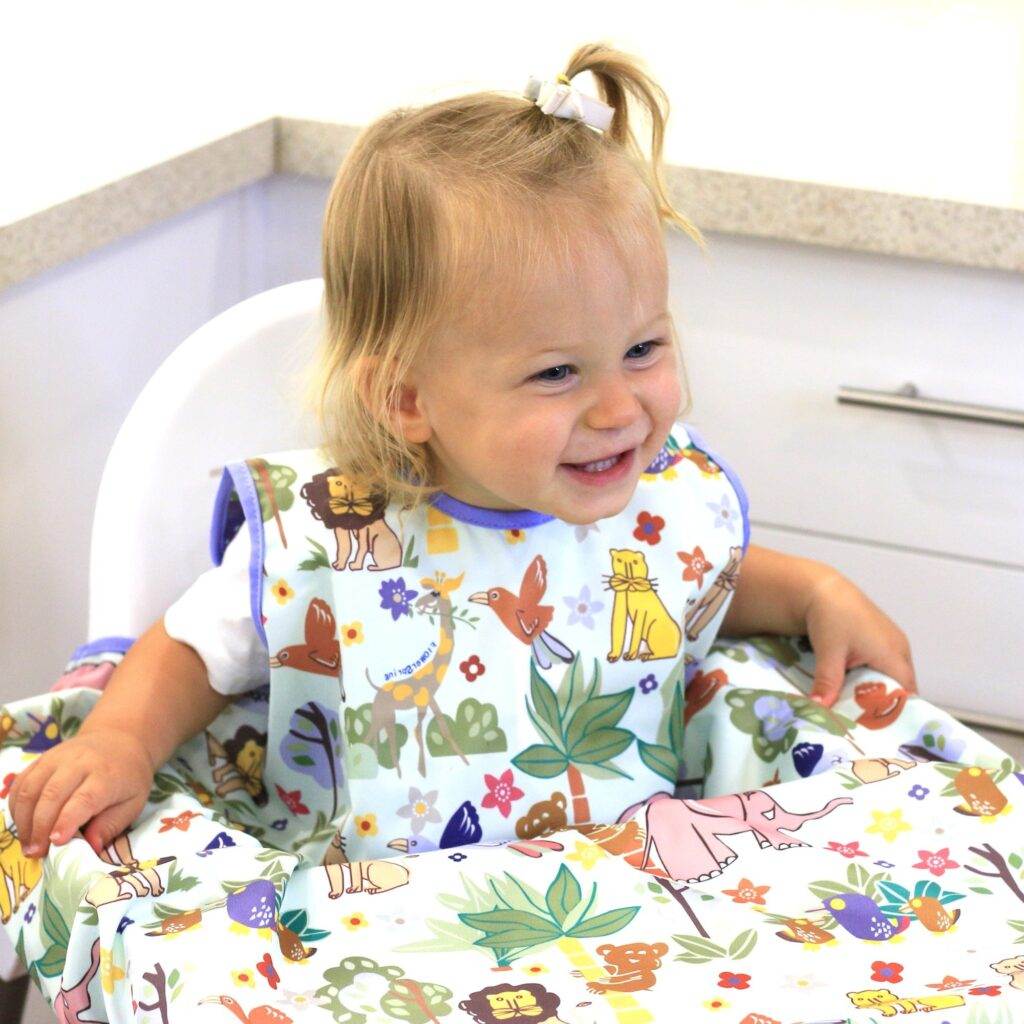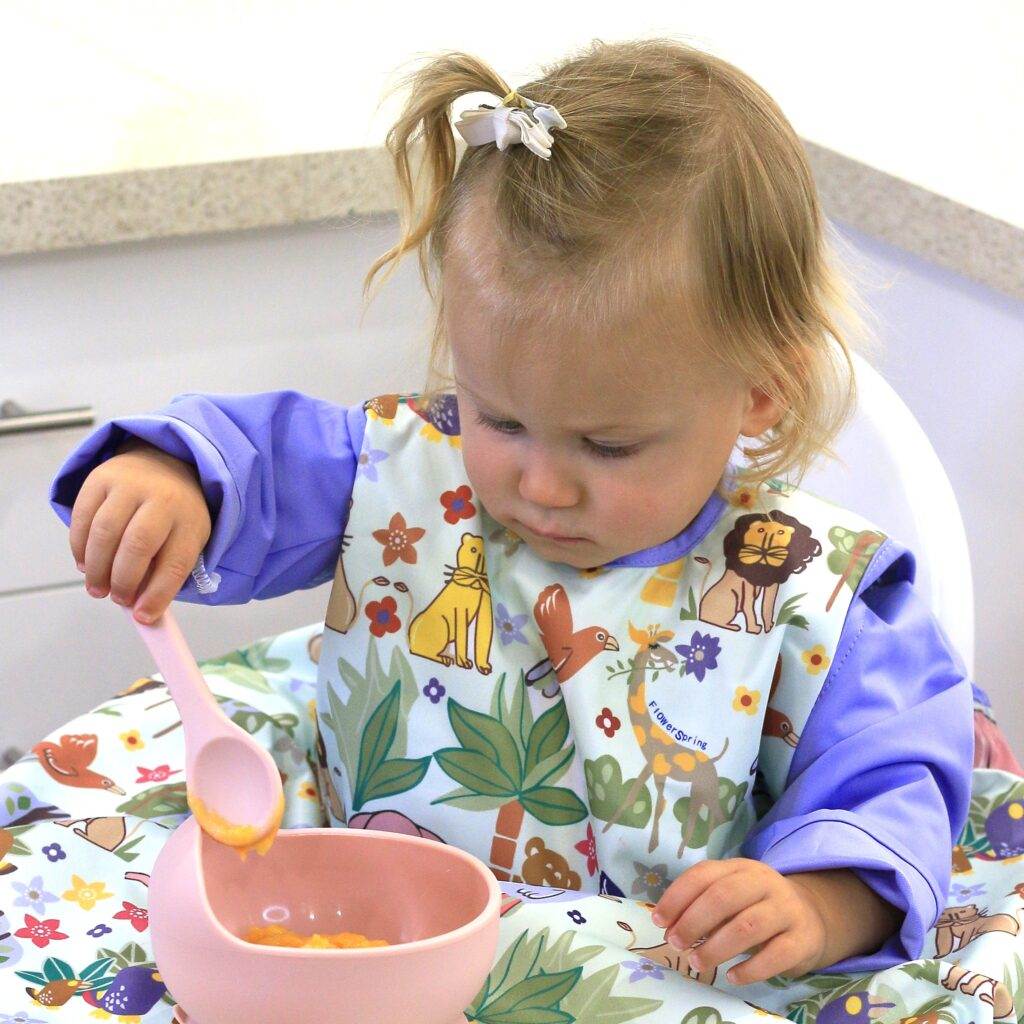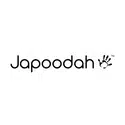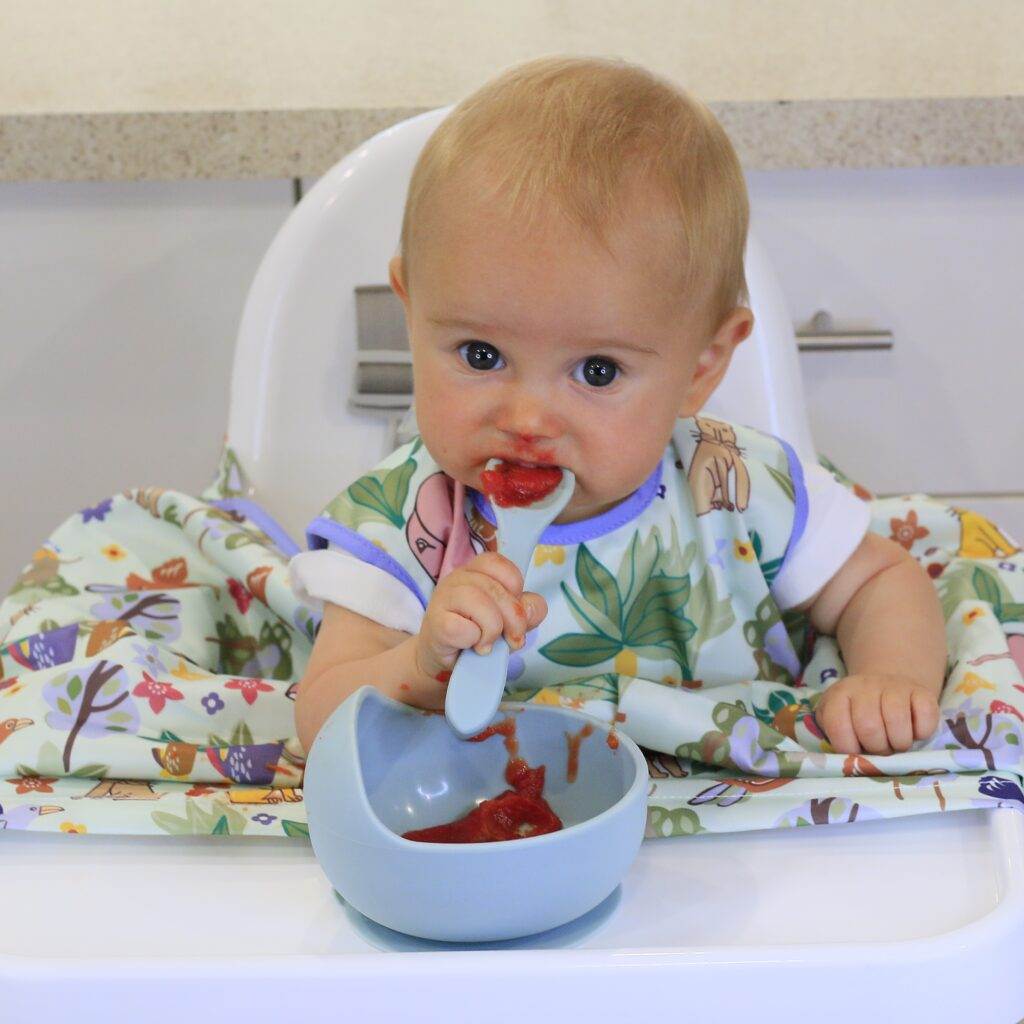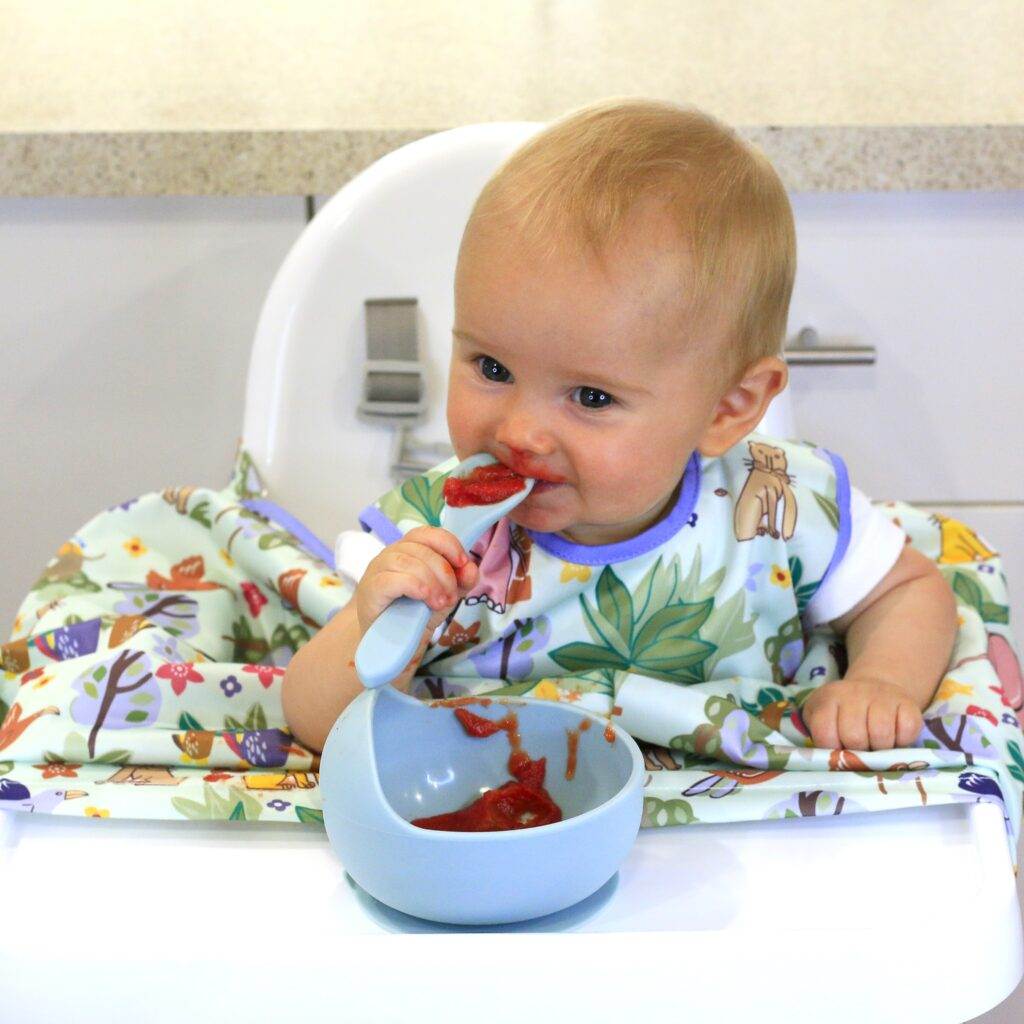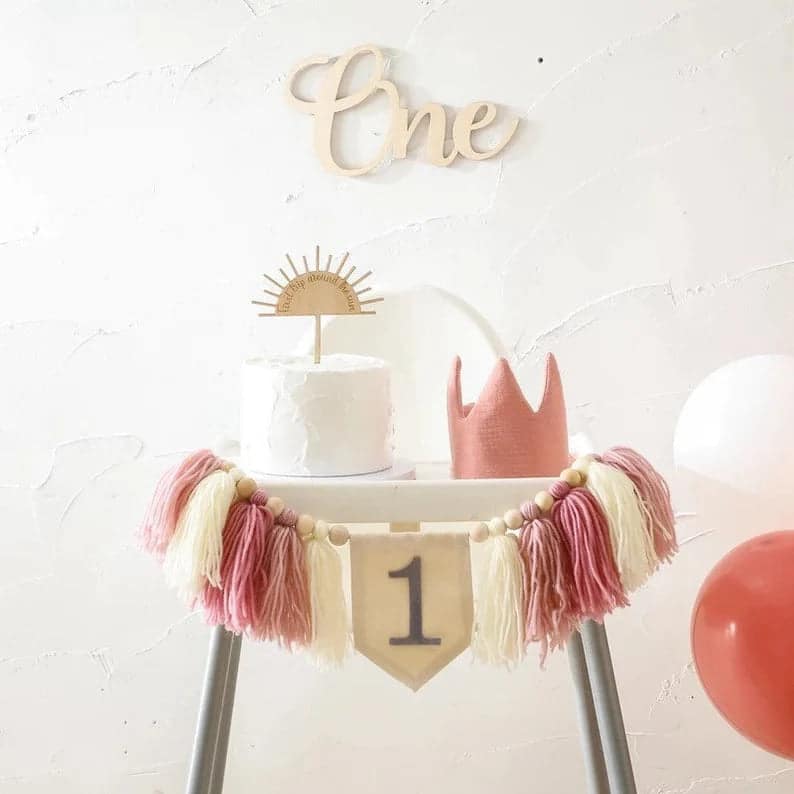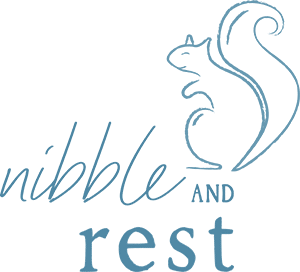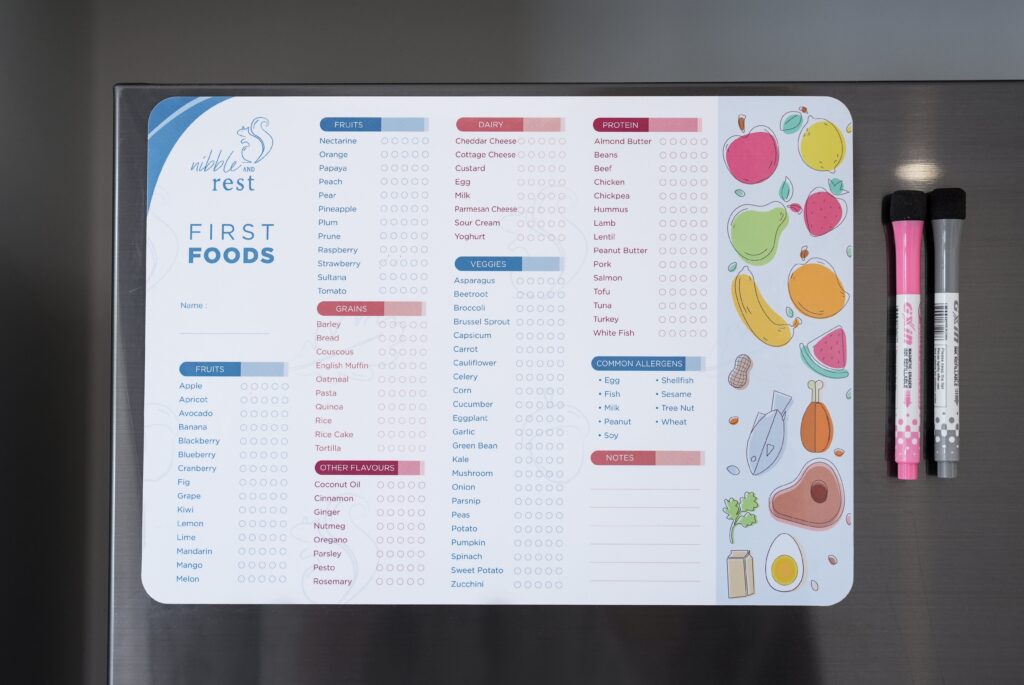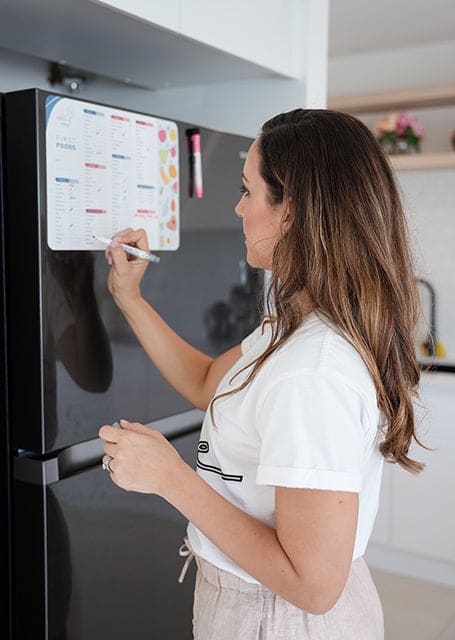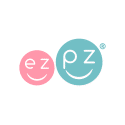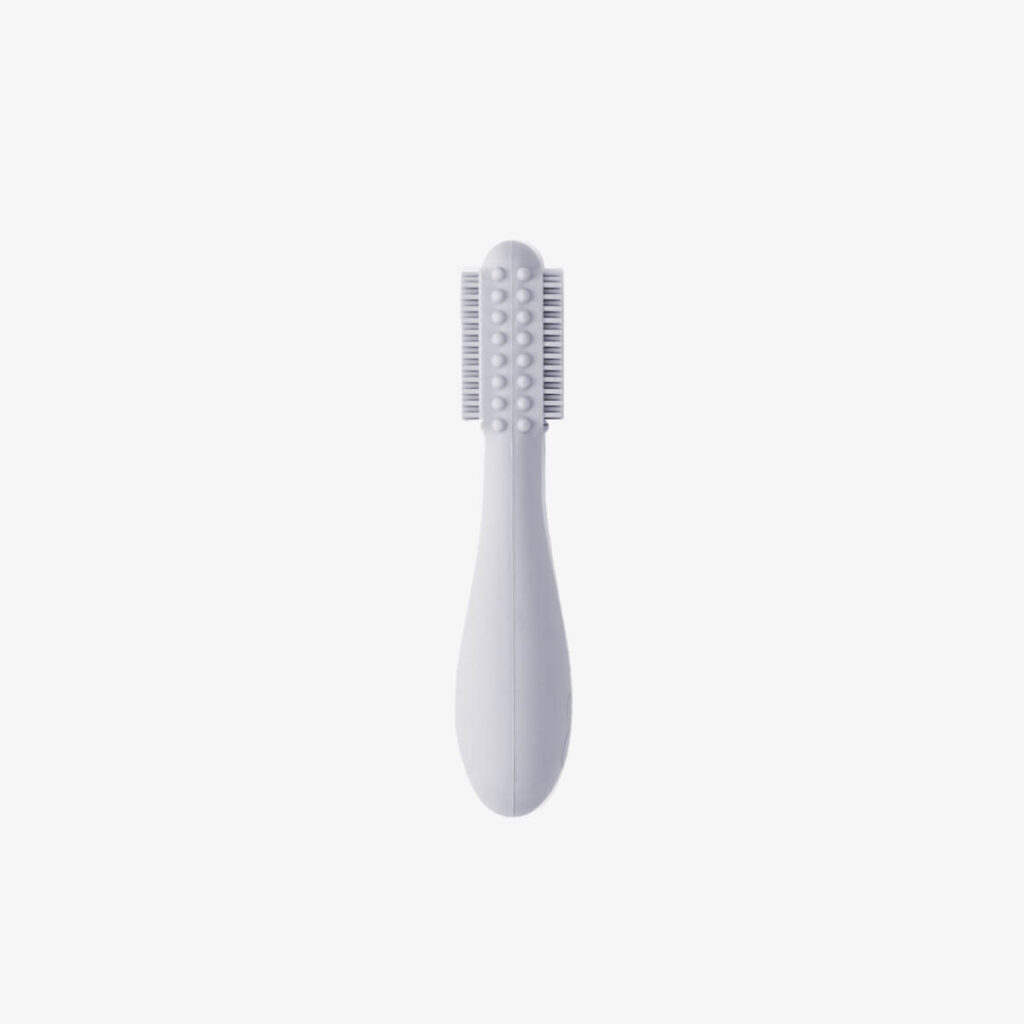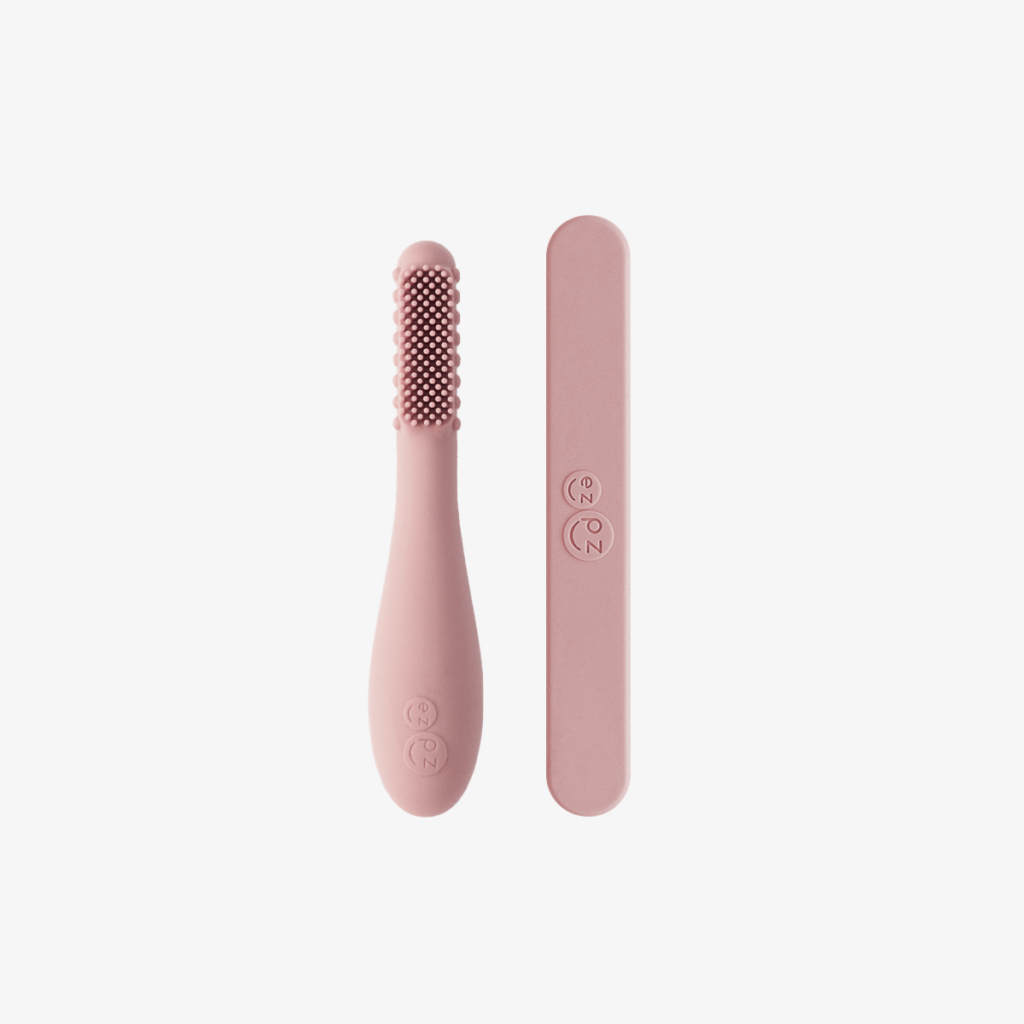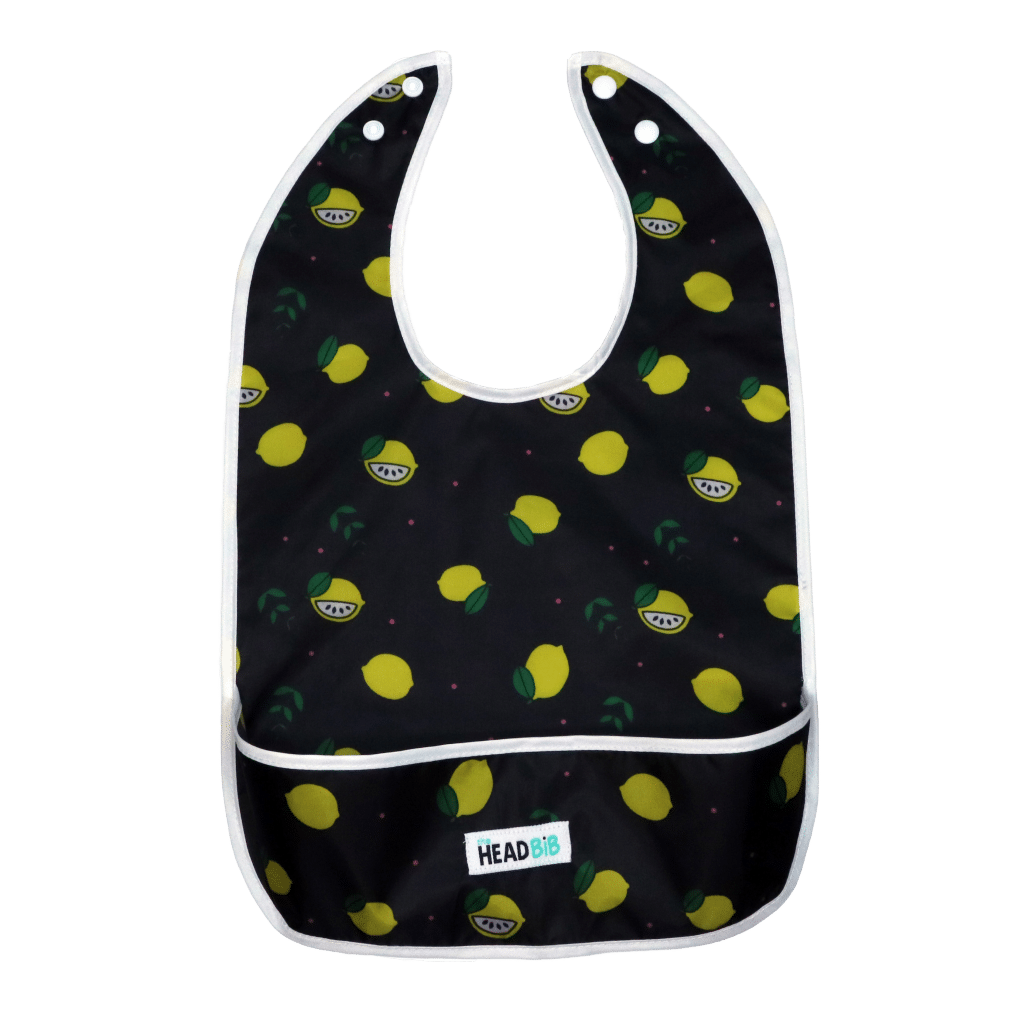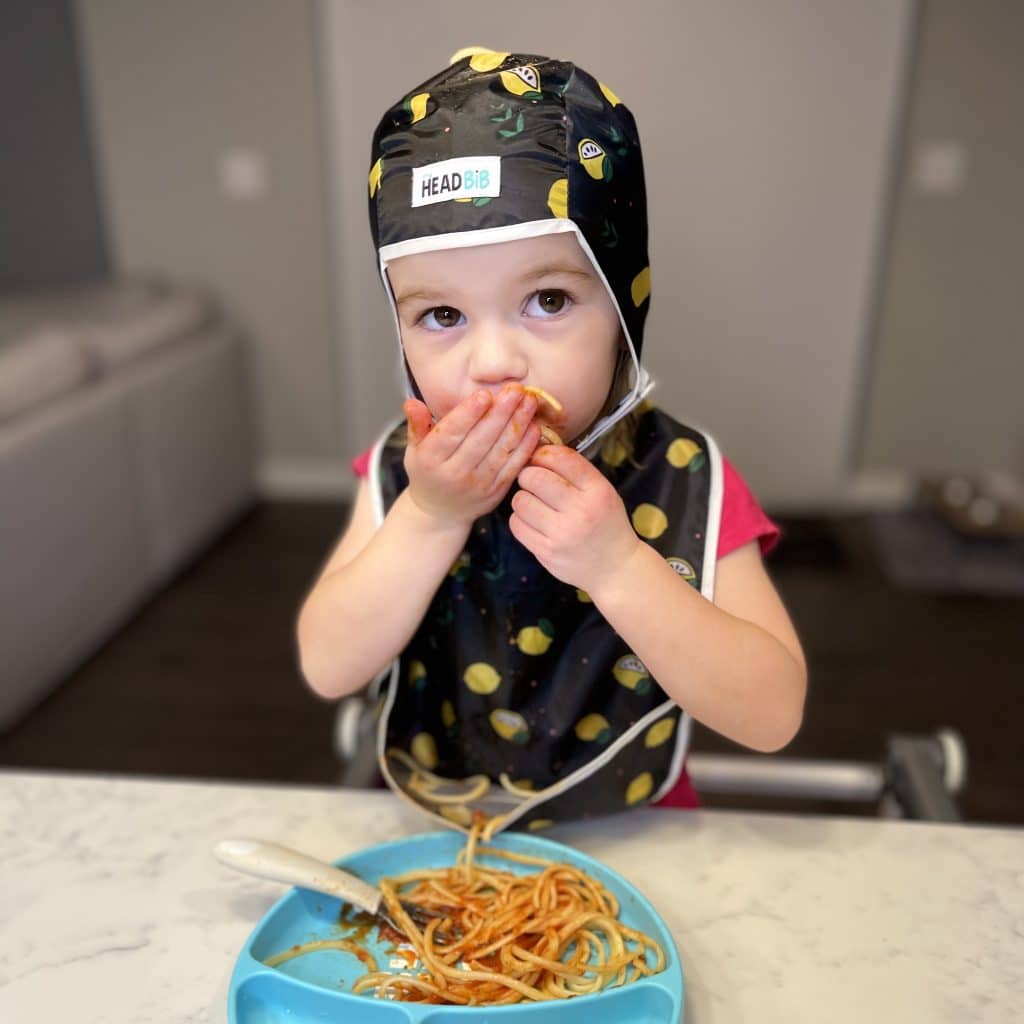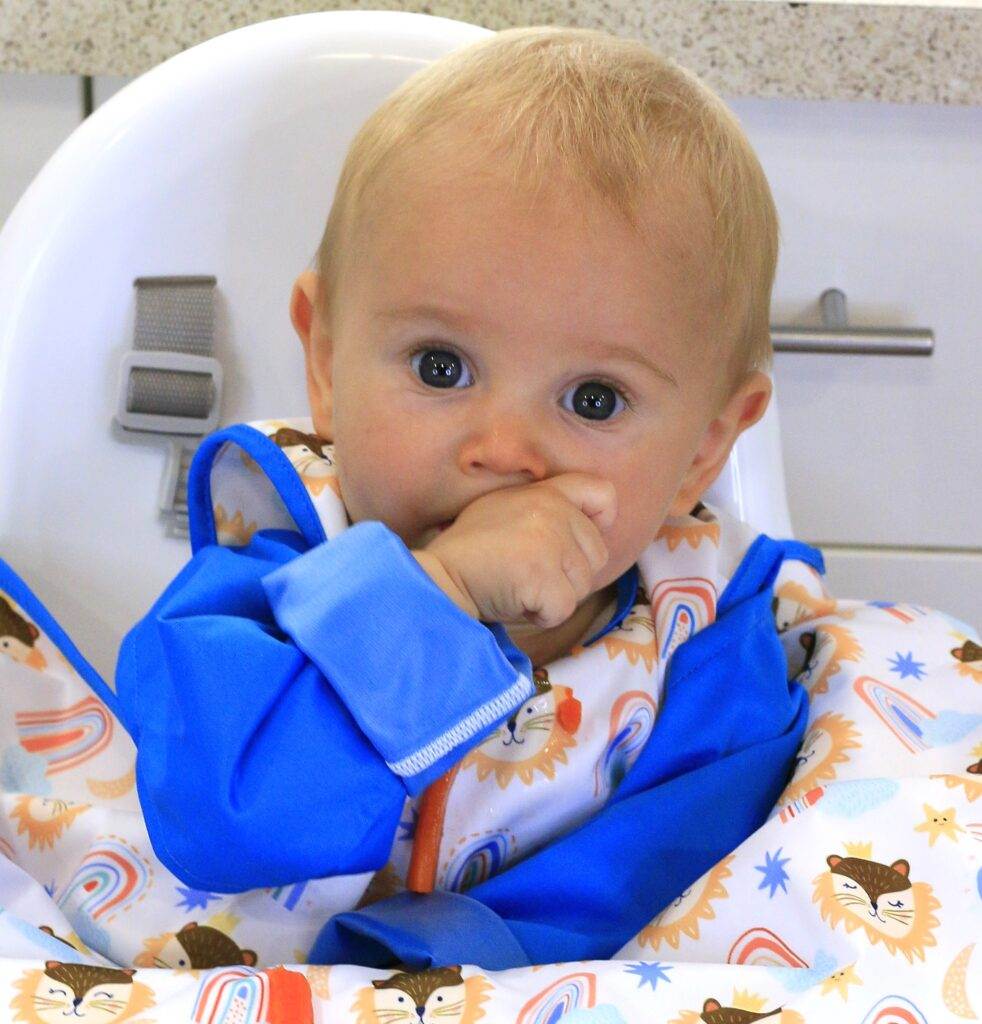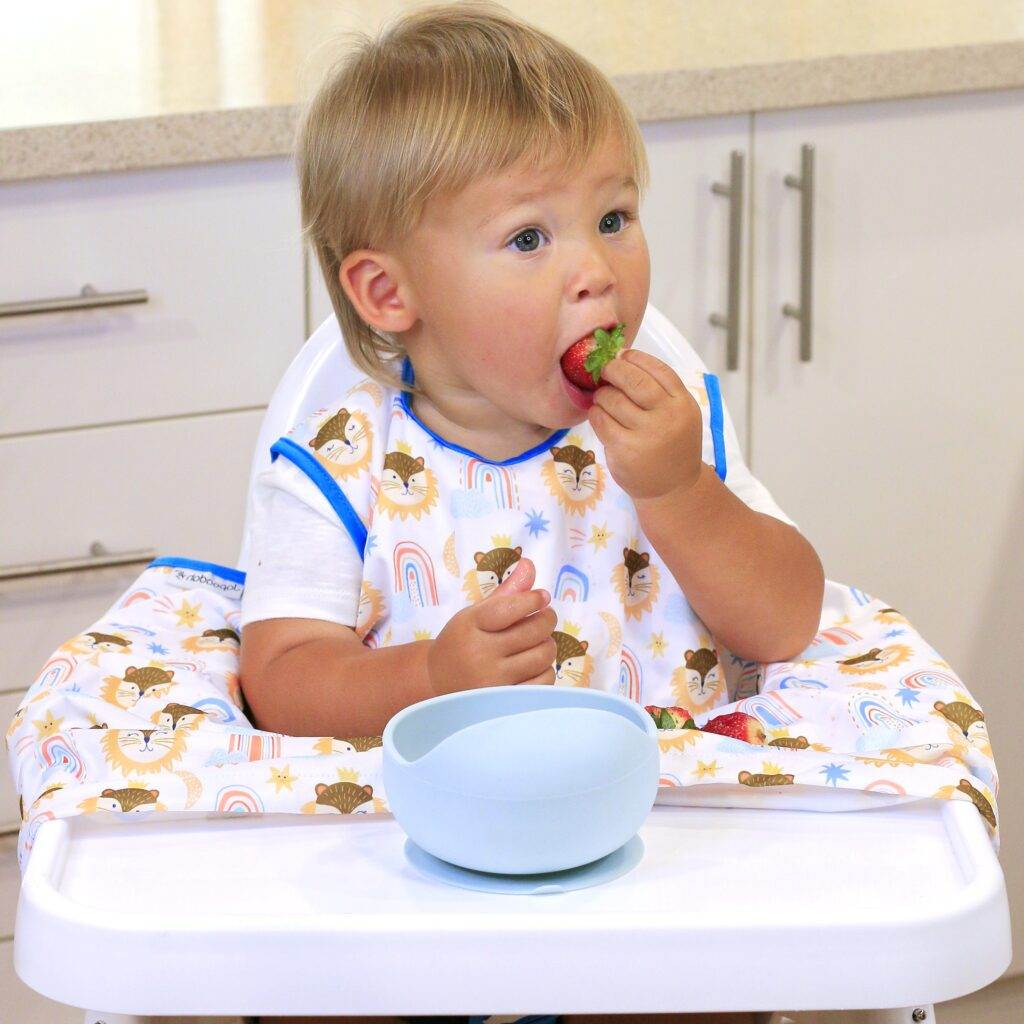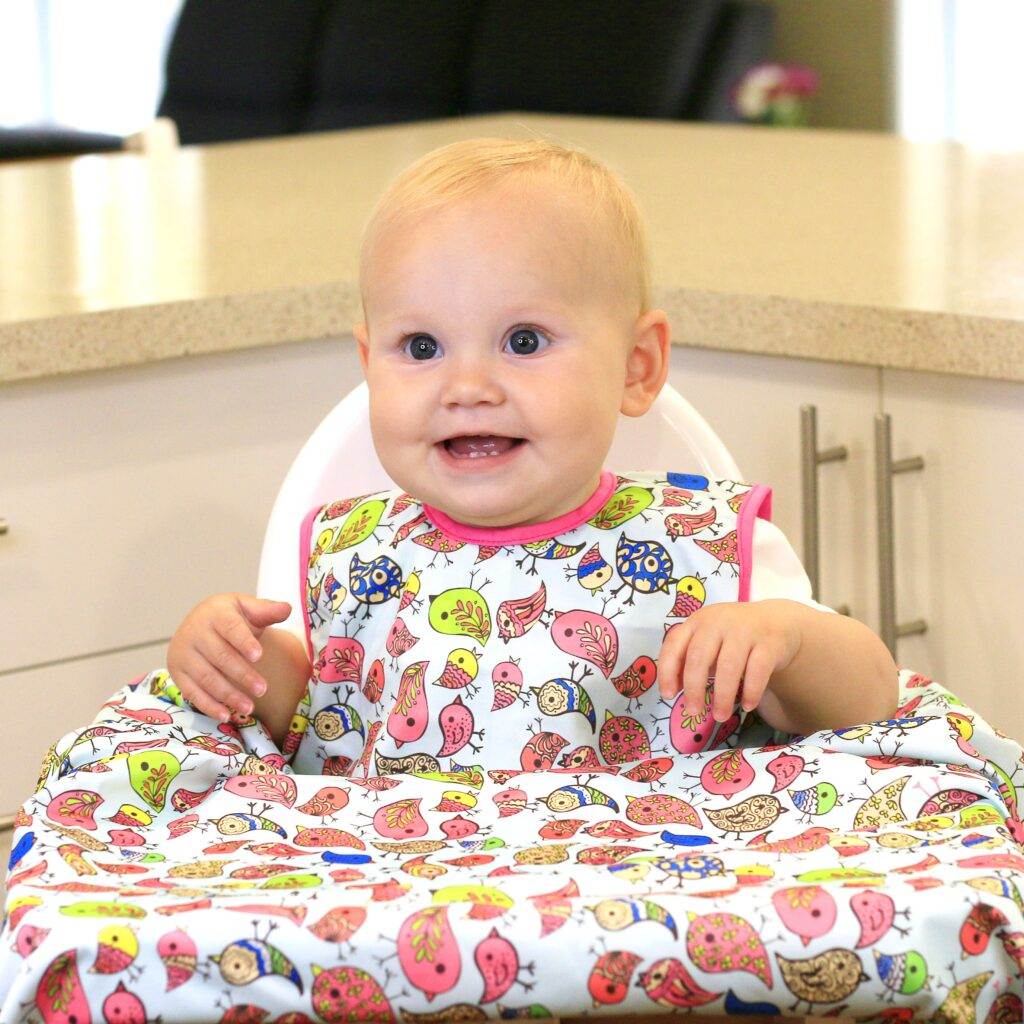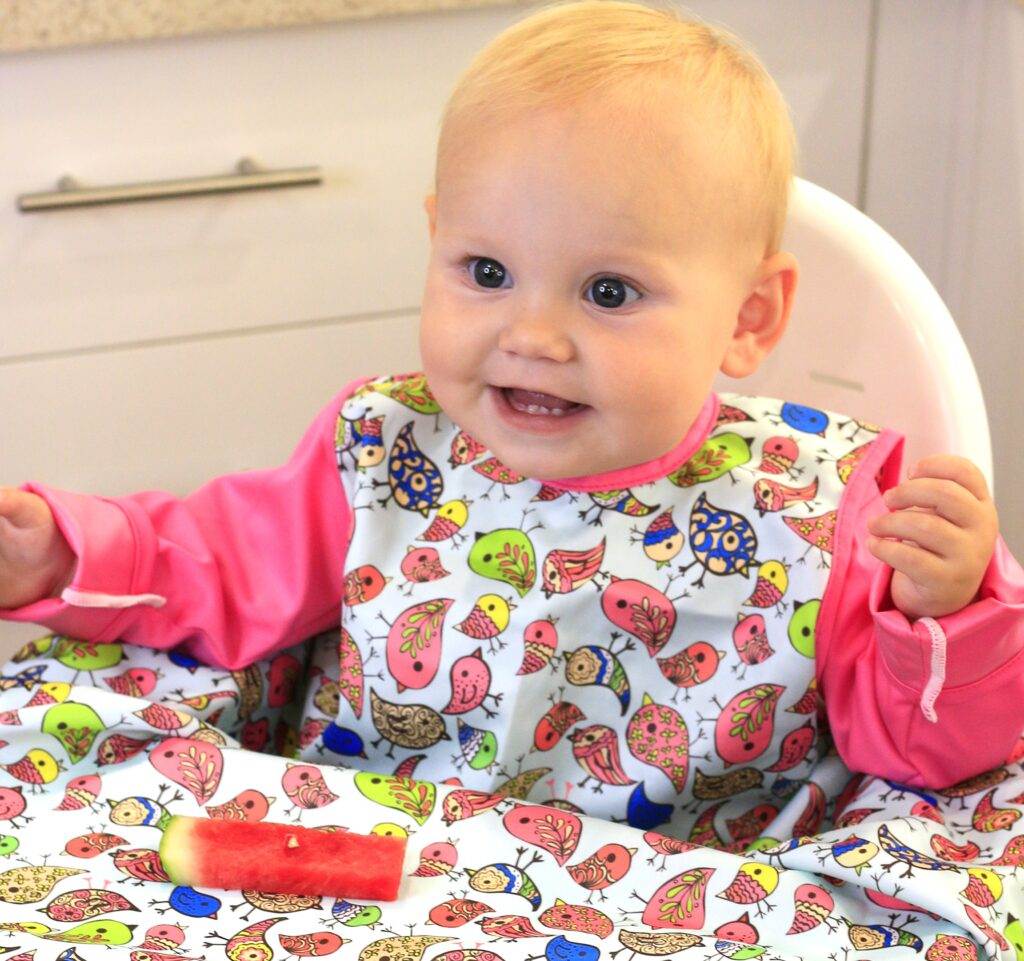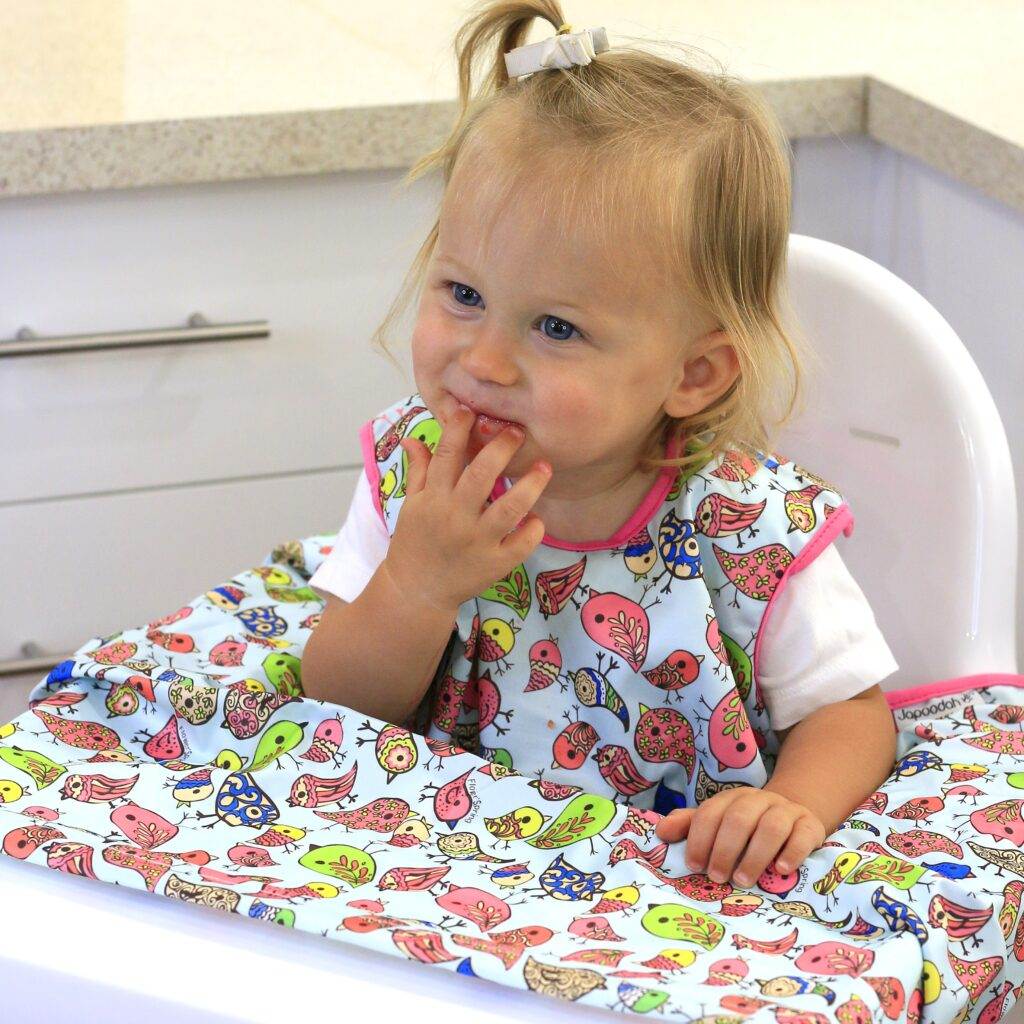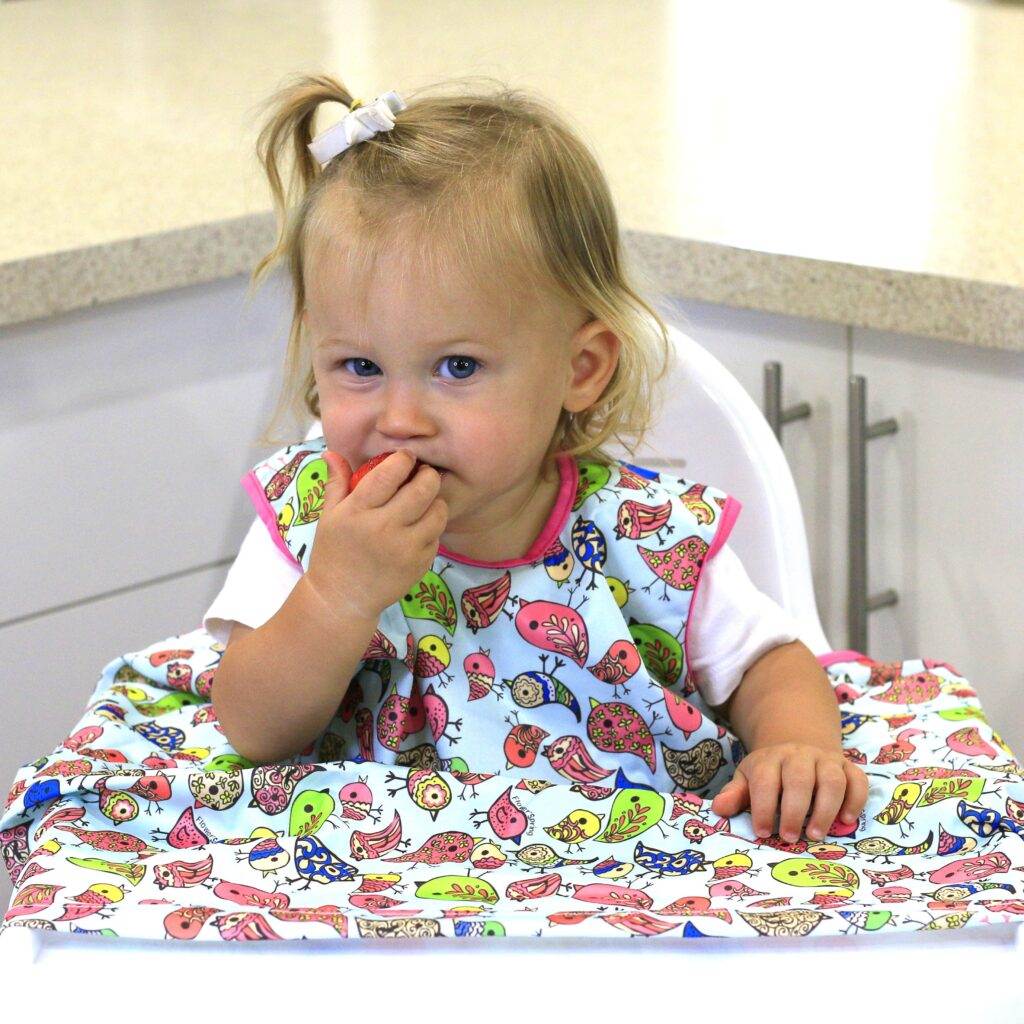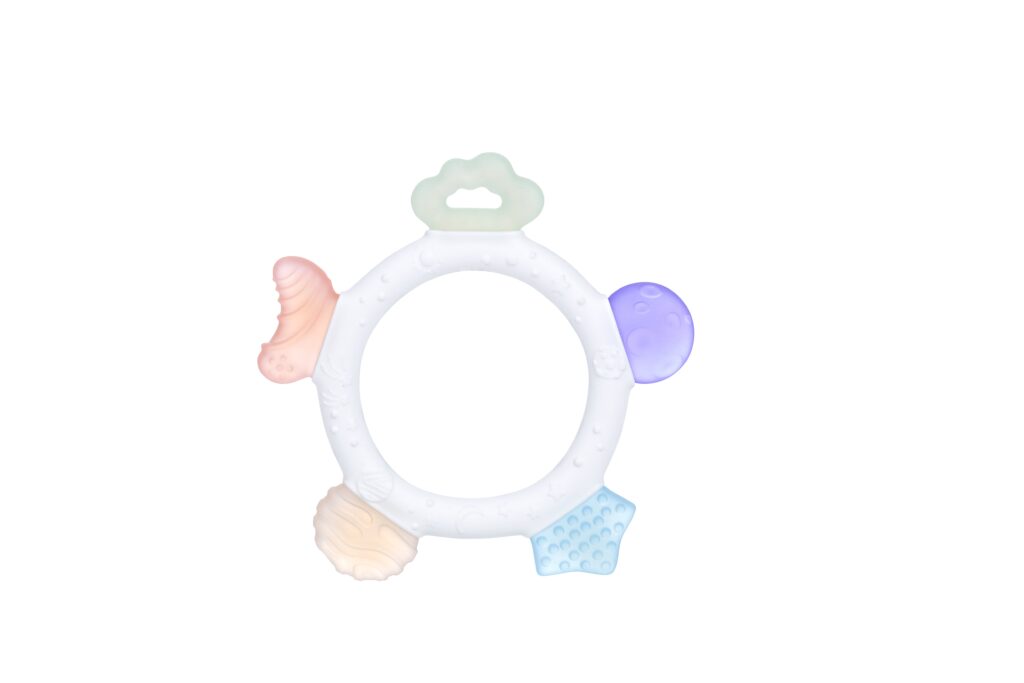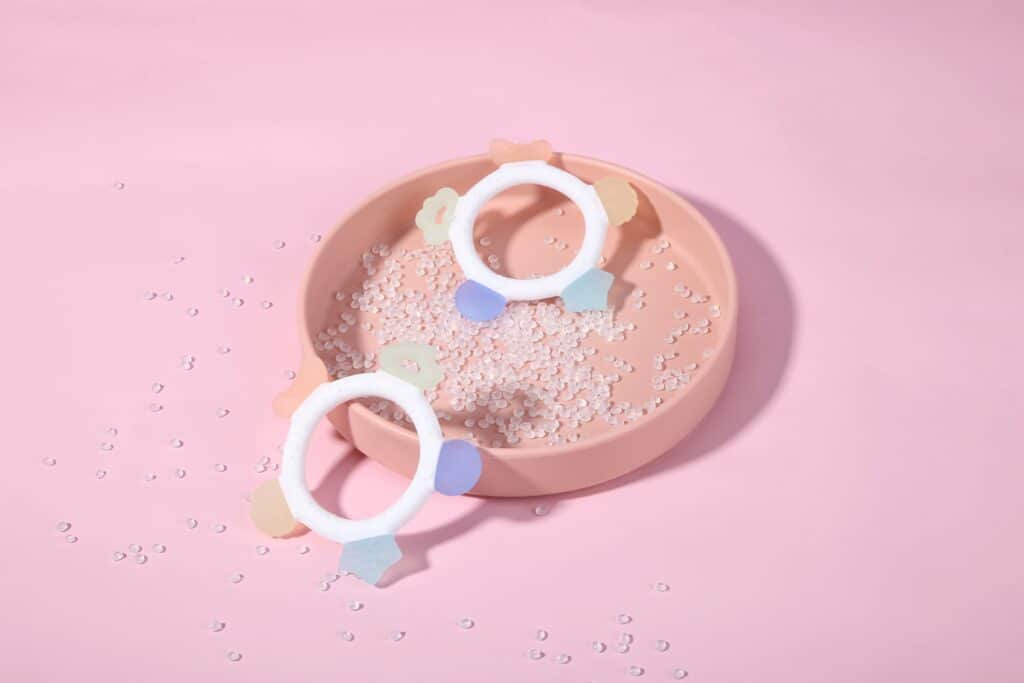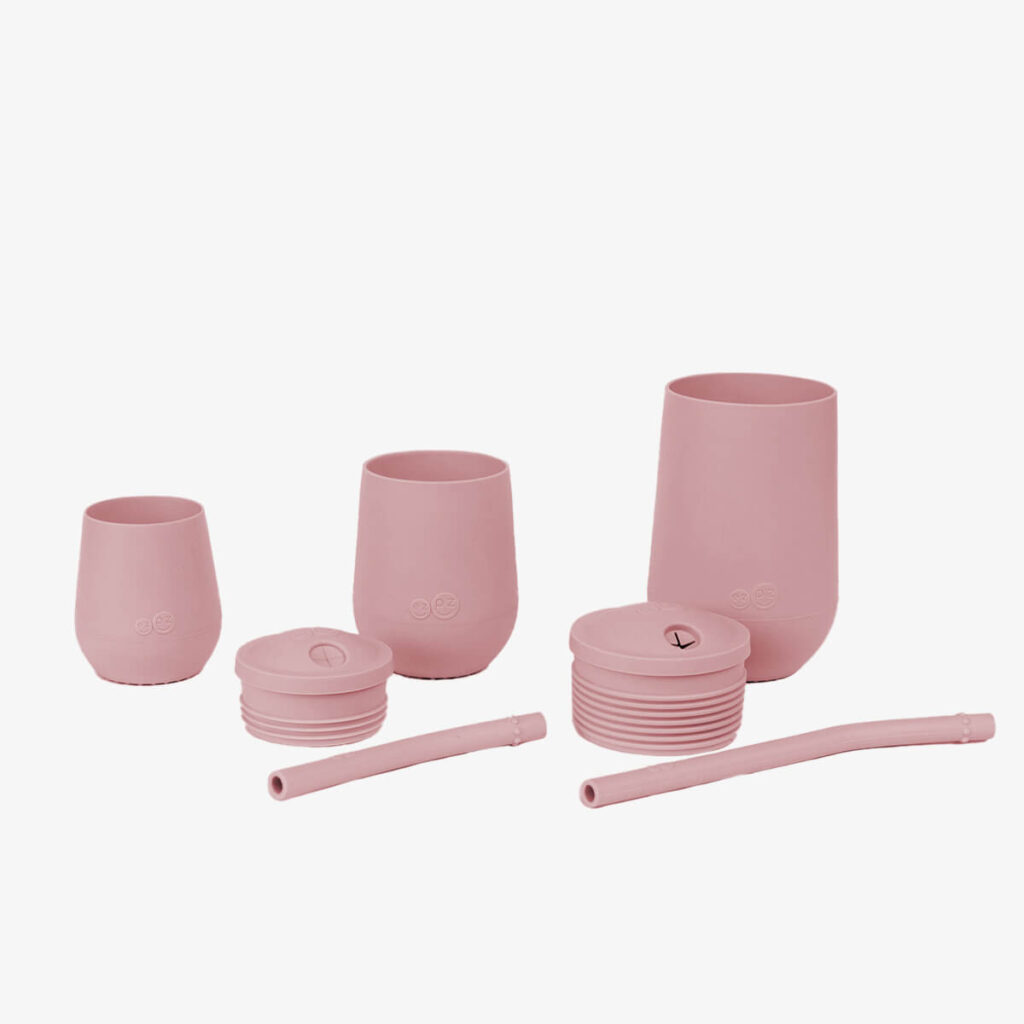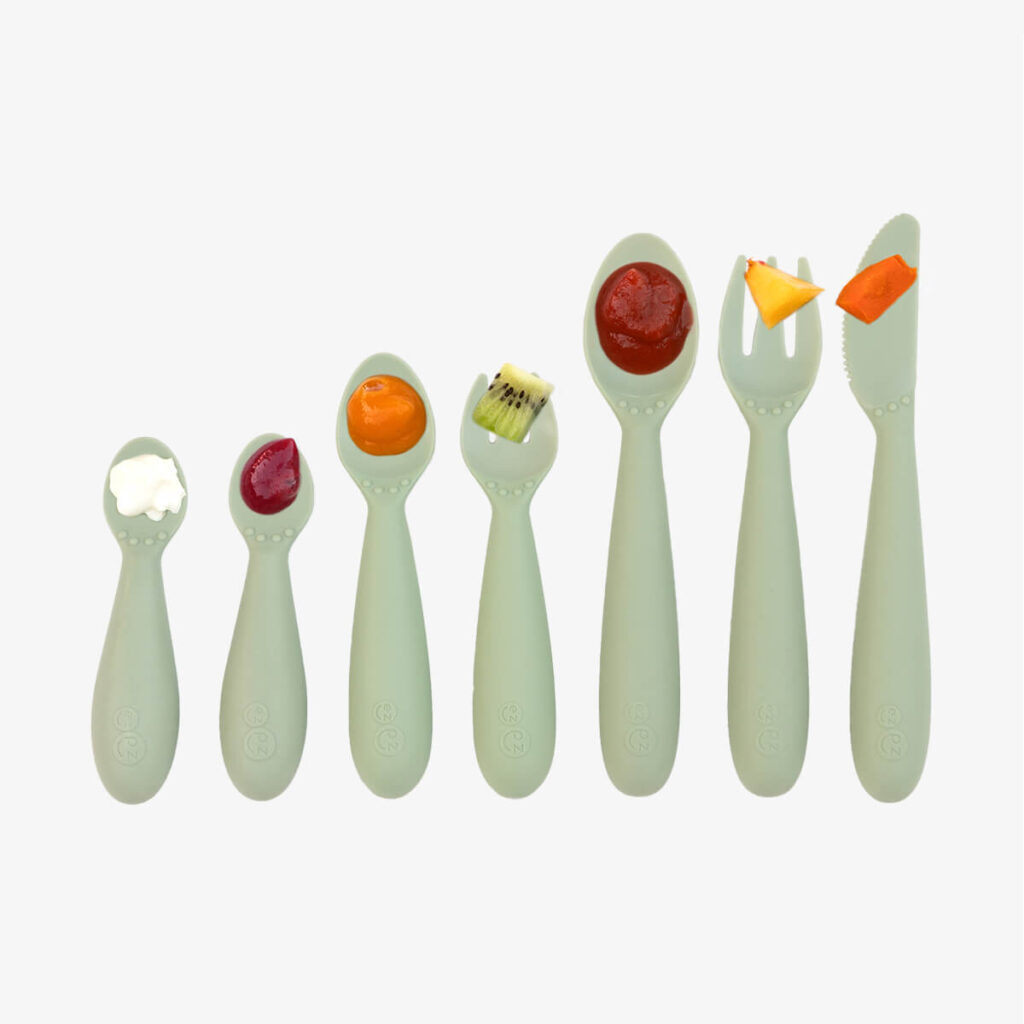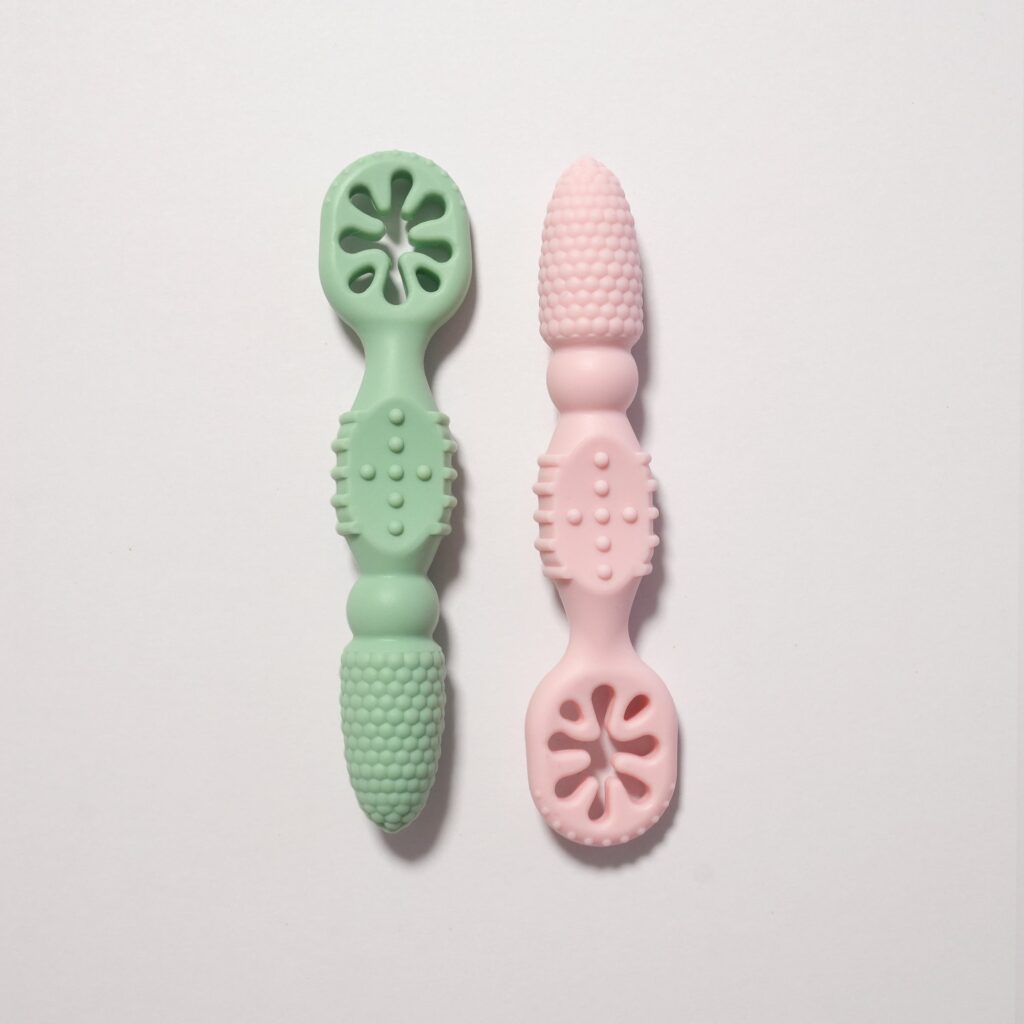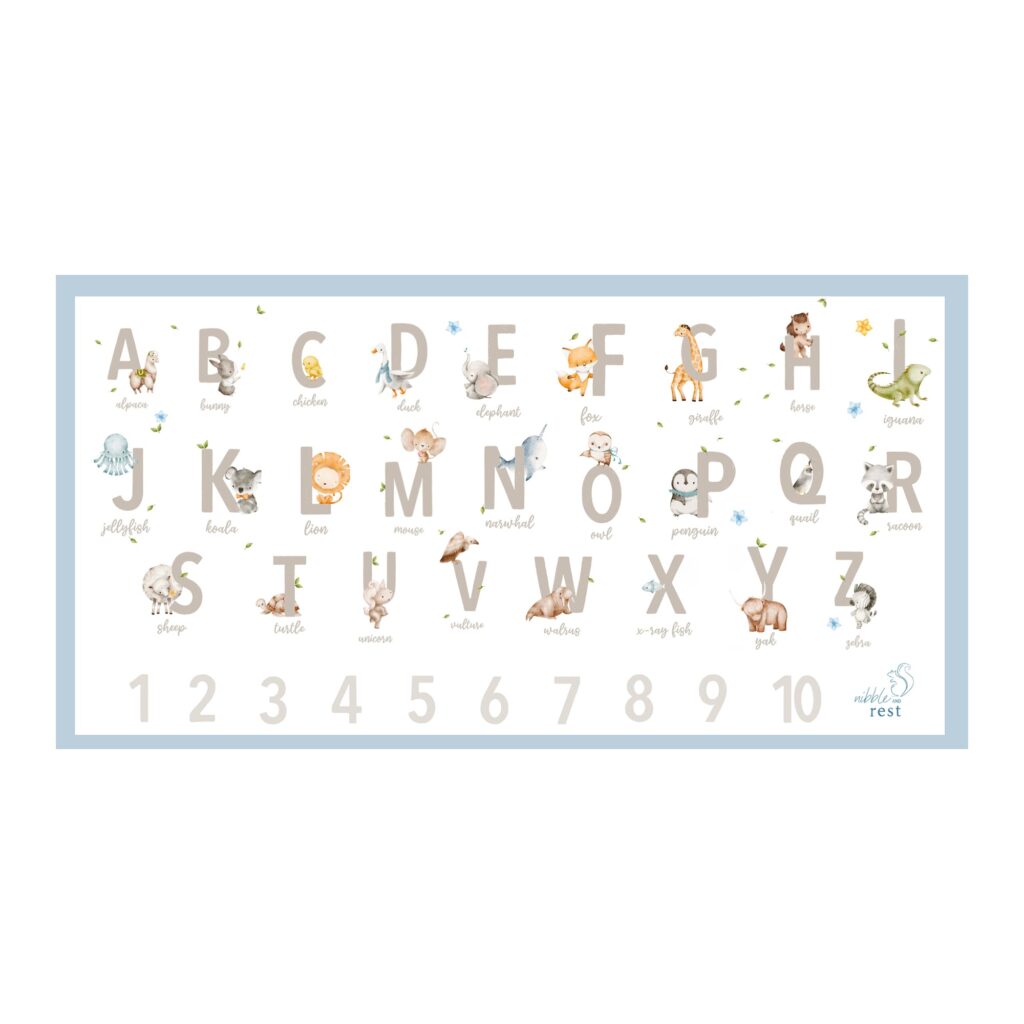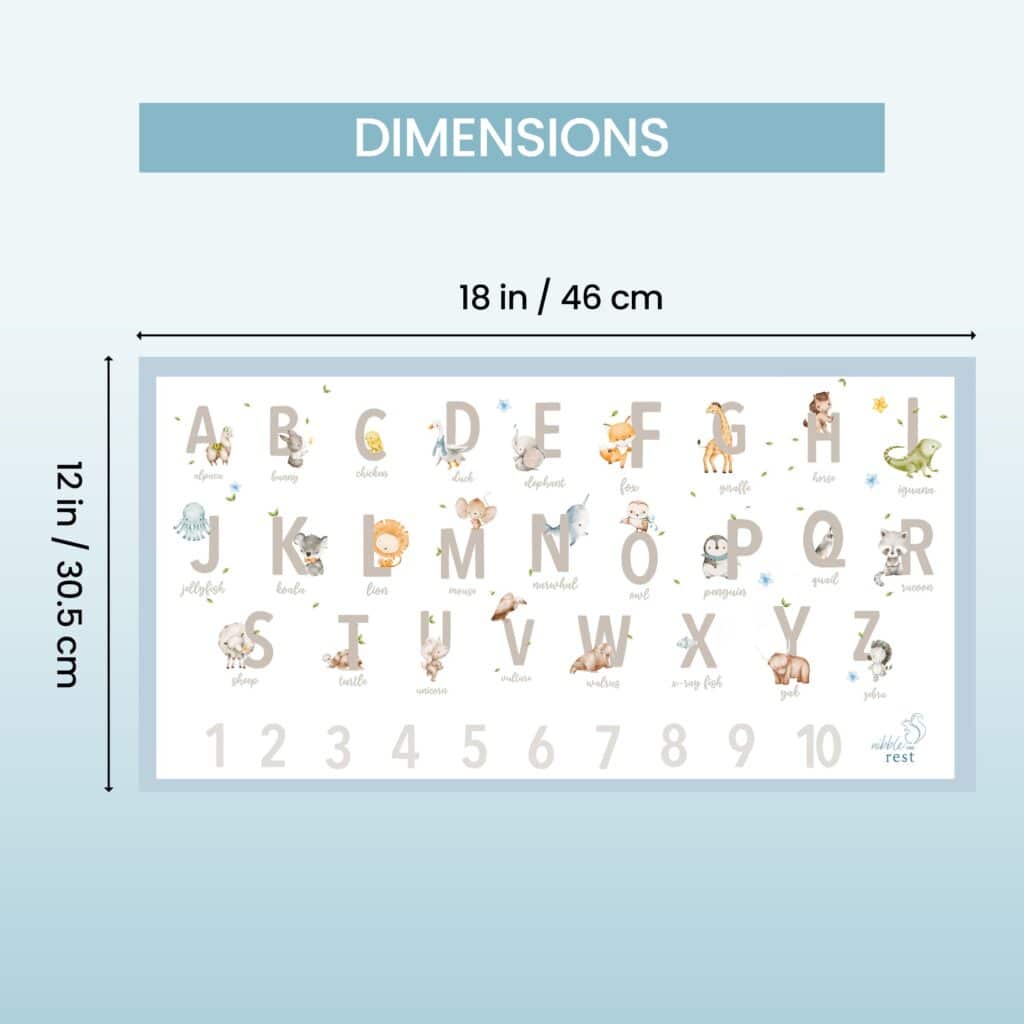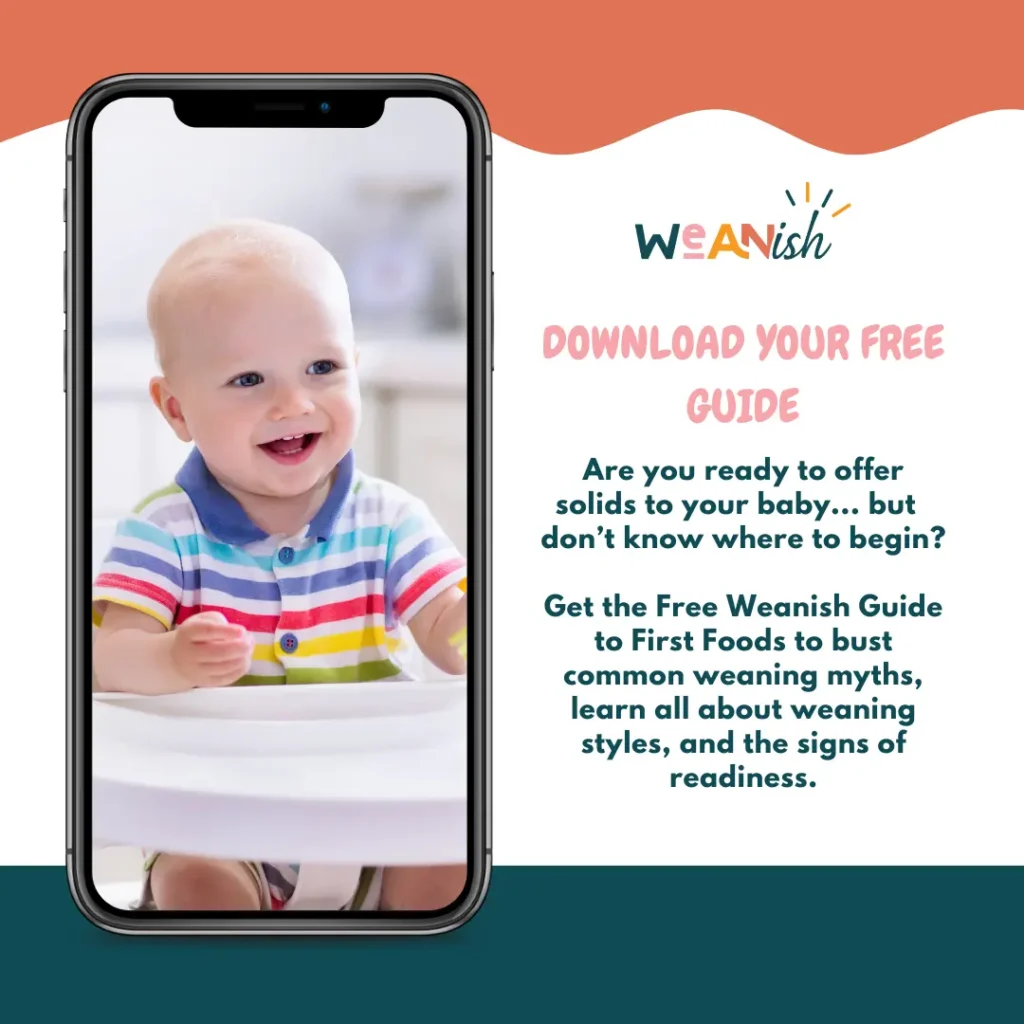The old adage that knowledge is power is so true.
If you prepare yourself with the knowledge of how to wean your baby with the appropriate method, you will feel comfortable and confident.
Hello and welcome to episode two of Introducing Solids with Weanish. I'm your host, Rennae Hoare, mum, children's nutritionist and founder of the infant and toddler feeding marketplace, Weanish. In today's episode, we'll be covering weaning styles and which one is right for your family. Whether that be traditional weaning, baby led weaning or combined feeding, I'll take you through each approach, what it is and why you may want to choose that style. We'll also go through the pros and the cons, and that will then give you an in-depth understanding of each, so that you have the knowledge and confidence to choose which method is best for you and your baby.
Let's start by just giving you a little quick precursor. We have covered this in our last episode, but in case you didn't hear it, let's just go over it again. According to the WHO, which is the World Health Organization, all of the weaning styles we're about to talk about are recommended from six months of age or when your baby is displaying the signs of readiness. If you're not sure of those signs of readiness, please go back to episode one, where we discuss all of the basics of starting solids, which includes the signs of readiness. Let's move on.
For today's episode, we are talking about weaning styles, and I wanted to start with why it's important to choose the style that you feel most comfortable with. And I want to say this because there is no right or wrong way to wean your baby, and I know it can be something that you can fall into a trap, because you might see one of your mum friends weaning in a certain way and then you may want to wean in a different way because what they're doing doesn't align with your comfort zones or your nutritional values or your family values. I think it's very important, before we go any further, for you to understand that it doesn't matter how you wean your baby, as long as your baby's meeting their nutritional needs. You are doing what is best and I want you to make sure that you're also doing something that you're feeling comfortable with.Don't go down the baby led weaning route if it's something that you're not comfortable doing. Stick with traditional weaning and gradually get yourself, you and your baby comfortable with solids or finger foods as time progresses. Okay, so let's have a quick discussion on how you can prepare yourself if you do feel a little bit anxious when you think about certain weaning styles or certain pitfalls. When it comes to weaning and common, you know, fears around weaning is choking. That is definitely the number one fear when you talk with people about what they're most hesitant about. I think there are definitely ways that you can get yourself prepared and make yourself feel more confident with the choice that you make, because you have the knowledge. The old adage that knowledge is power is so true. If you prepare yourself with the knowledge of how to wean your baby with the appropriate method, you will feel comfortable and confident. What I suggest is, do your research, whether that be at your local library or online, and empower yourself to make the choice that is right for you and your baby.
When I was starting weaning with my little one, there were less resources online and there were definitely more resources in libraries and books. What I actually did was I went and bought books and I researched books to see which one worked for us, actually for us, I was going to go down the traditional route of winning and I ordered a book on Amazon. And you know on Amazon, where they have the little bit at the bottom that says recommended or other people bought. I also bought this book on baby led weaning, which I'd never heard of before, and I thought, well, it's been recommended. And I read the blurb and it sounded really interesting. I thought, okay, I'll get both. I actually bought a book on traditional weaning and I bought a book on baby led weaning and it's so interesting that the book that I ordered on traditional weaning never arrived. It just never turned up and I don't know what happened to it. It just never arrived. I think I can't even remember if I went to get a refund or not, but what ended up happening was because the baby led weaning book arrived. I read it and then, when I read it, I was like wow, that is amazing. You know, that really resonates with me and that's how I would like to feed my baby, and so, even though I had sort of started giving a few little purees and things like that to begin with, I immediately switched to baby led weaning and I never looked back. I think once you have the knowledge and you find something that resonates with you, you will go and you will go all in and you will do it with confidence. I suggest that you definitely do your research, find some books, read about the weaning styles, and that will give you the confidence to go forward into the next stage, which is the actual weaning process.
My second tip for preparation and this is a must, I think, in any form of having a child, and I would do this. I did this when I was pregnant, if you haven't done it, do it now. It's an infant CPR course, they usually are offered at your local hospitals. Plenty of providers are now doing online infant CPR courses, go online. Do a quick Google search, find somewhere near you that you can go and do an infant CPR course, because in that course they will show you what to do if your baby is choking, and it's imperative that you know how to look after your baby in that situation. That is going to make you feel so much more confident when giving solids, because you will know exactly what to do if something were to take a turn. My son is 12 and my daughter is eight, and up until this point I have never had to use it, thankfully. But I have the knowledge to know what to do if one of them were to choke, and that, to me, is the most valuable thing that I could have done to make the weaning process fun and easy and stress-free, really.
Now that we've covered the basics which is why it's important to choose the right style, and then how to prepare yourself for that choice let's actually move into the weaning styles that are available Now. There are generally three common weaning styles that people would choose: there's traditional weaning, there's baby led weaning and then there's combined feeding. We're going to go through each one separately and we'll also talk about the pros and cons as we do that. By the end of today you will have a good understanding of each of those styles of weaning and then you will be able to make an educated decision. If you still need more information, go away and get some more and then you can move forward to the next stage, feeling like you know exactly what you want to do.
Let's start with traditional weaning. The premise of traditional weaning is basically to expose your baby to solid food gradually, in a way that sort of feels manageable for you as a parent, while supporting your baby's nutritional needs, growth and development. That would be to start with purees and you gradually then increase the texture of your purees from that six month age to around eight to nine months, and then you would start to introduce finger foods. Ideally your baby would be transitioned to finger food only by nine months of age. So no more purees. The puree stage is actually quite short. It's generally only around three to four months max, because you want to have them on full food full whole foods by the age of 12 months.
The three stages of purees are stage one would be that smooth puree, that silky smooth puree that wouldn't have any chunks or texture in it. Then stage two would be a textured puree and that's got a little bit more chunks, but not big chunks. And then your stage three is your chunky puree and this is one that you want them to have, to want to chomp and chew, and that's where you start getting that chewing mechanism from. A good rule of thumb would be to do stage one for a month, stage two for a month, stage three for a month, and then you, at the end of that third month, you're starting to give them finger foods and your purees are getting chunkier and chunkier so that actually they're really having to chew and chew and chew to to get that puree masticated, to be able to swallow. And then at the end you're going to be giving sort of in that nine month mark, at the end of your puree cycle, you'll start giving your finger foods and you're going to serve those like you would if you were baby led weaning, which is in finger sized portion, it's about looks like a french fry, it's about the length of your finger, about the width of your finger, and it should be able to be squished in the middle so it's nice and soft. The pros of a traditional weaning style is that it can give carers who have a little bit of anxiety around solids peace of mind. It does put you, as the parent, in control. If that's something that you prefer, this might be the weaning method for you. It can be less messy. This might be the weaning method for you.
It can be less messy, but that's usually just at the beginning, because once your finger foods are introduced, the mess really does amp up anyway. And no matter whether you choose traditional weaning or baby led weaning or combined feeding, at some stage baby's going to want to do it themselves, and that's when the mess is going to occur. You cannot avoid the mess. Some people have a school of thought where they go,”let's get the mess out early.” Other people are like I just cannot deal, I need to wait, and they get the mess out a little bit later on. But whatever you choose, there's always going to be mess. The other pro for traditional weaning is that it does have a guaranteed nutrient intake, because you are physically spooning the food into their mouth and they will eat and swallow it.
The cons to traditional weaning would be that sometimes I've seen a lot of families get stuck in the puree stage, which sort of means that they're still having babies eating purees into the 12 months zone or longer, and that can really result in developmental delays, nutritional delays and even texture aversions, which basically means that they won't eat anything that isn't a smooth puree. That's when you start getting picky eating and it becomes a problem and you might have to start seeing sort of you know, know, speak, pathologists and OTs and things like that to help you get through it. Cons can be that it is still quite time consuming. You're having to prep and puree and steam and roast and then puree, and it can. It can be a little bit more work.There is a risk of overfeeding, uh, particularly because you're spooning and your baby can tell you when they're full, but sometimes they may be fed more than they normally would on their own and it does reduce their independence. That's something that you need to think about when you're making this choice if traditional weaning is for you.
Let's have a look at baby-led weaning now. The main premise of baby-led weaning is that you're going to be trusting that your baby is going to dictate the timing of when they eat their food, sort of how much they eat and then they choose what they want to eat. Your job is to supply them with the meal that you choose and then their job is to eat what they want, when they want and how much they want. When you start baby-led weaning, you do not start with purees. There are no purees at all in baby-led weaning. You can offer a thickened soup. That's always great. I used to do that with my little one - thicken up a bit of soup and then put some bread in there. She loved it. Then you're serving everything in finger foods or family meals. For me, if I served her soup, I wouldn't puree hers, I'd make it really chunky and she'd eat all the nice chunks of, say, potato or beef or whatever was in it, whereas we would have ours as a liquid soup. But she used to love that.
Otherwise you're serving them in finger size, finger shaped sizes, like a french fry which we talked about earlier and again the squish test. That's sort of how you start at six months old. As they get bigger you can start cutting the sizes a bit smaller. But it's interesting because you want them to have longer, bigger portions or serving sizes when they're smaller because they don't have their pincer grip. Their pincer grip is when you touch your forefinger to your thumb and you sort of like squeeze it a little bit, whereas what they have at that age, at six months, they have a palmer grasp, which is basically they close their whole forefingers over the object and that is why you would give them a longer sort of stick like piece of food, rather than small pieces, because they can't pick up the small pieces. They do and can pick up the big pieces. What they do is, they pick it up with their palm, they take a bite at the top, they can push it up a little bit and then they probably will drop it and then they'll go to the next piece. You might find that they're not eating all of the food that you're giving them, but they're doing it in a way that is intuitive and works for them developmentally.
The pros to baby led weaning would be that there are no purees. There's definitely less prep work, particularly because what you're doing is you're preparing your own meals and then you're just portioning out and cutting it into the correct serving sizes for your baby. There's actually not a lot of extra work. It's easy to integrate into your normal family mealtime schedules, which then means when you eat out, it's actually not a stress at all, you can order something off the menu. It's actually not a stress at all, you can order something off the menu. When you go out on the go, travelling, you can have things in your bag that you've already prepared, like little muffins and whole foods that have been. I used to do, a spinach and cheese muffin or broccoli and cheese muffin and something that had all the nutrients in it and then I could just give it to him in the pram and he used to just munch on that when we were out and about.
Baby-led weaning certainly does promote independence and it encourages that fine motor skill. It's also really good for food regulation for babies, so they can regulate their food intake and they're not being force-fed. It does certainly expose your baby to a variety of textures. And again, the family meals thing is really great because when you're preparing something you know they're eating what you eat. It really does mean that you're more inclined to eat as a family because you're all eating the same thing. Family meals are super important for so many reasons: development, social contact, modelling. We definitely encourage family meals at all opportunities.
The cons to baby led weaning is that it can be very messy, you know, but mess is inevitable, which we talked about before. It doesn't really matter which method that you choose. There will be mess. At the beginning of baby led weaning you might not know how much your baby is ingesting because they are still learning, so sometimes it looks like they're eating but they're not eating a lot. Let's remember they don't need a lot at the beginning. Anyway, if you're giving a puree, you might only be giving one or two teaspoons, realistically you're probably getting exactly the same amount. Then the cons for baby led weaning is certainly the fear around choking, and you know this is actually a bit of a myth that a lot of people have put on baby led weaning that there's, you know, increased risk of choking and I think that comes from misunderstanding. There have been studies about this and there is absolutely no evidence that baby led weaning has an increased risk of choking over traditional weaning. And actually the studies show that all styles have the same risks and that is why it's important that you really empower yourself with infant first aid, because you'll then know what to do in the event of a choking episode. Let's just make sure that we know what we need to do so then we don't have to worry about it.
With whichever weaning style we choose, our last one is combined feeding. Combined feeding is basically the puree stage and the finger food stage combined side by side, so you're not introducing one then the other, you're actually introducing them both at the same time and it's still important to go through your puree stages of sort of texture increase whilst you're increasing the finger foods, because, again, your goal is to have them off purees, sort of by nine months of age. This is certainly becoming a way more popular method of weaning because it does allow peace of mind for knowing that your baby is ingesting the nutrients they need at that age, particularly those iron rich foods at six months.That's why we start solids is to start increasing their iron, because it starts to deplete at six months of age. Combined feeding is a really great option if you don't want to go full into baby led weaning but you still want to sort of offer finger food at the same time. The pros is that it is definitely more flexible. It certainly allows for peace of mind knowing that your baby is ingesting that food. It balances your texture introduction as well and it does give you that independence and nutrient intake which we talked about before.
And this one's also a good one to promote family meals, because you can serve the same meal that you're eating to your baby if you're doing a combined feeding approach. The cons would be that you still have to puree, there's still that little bit of extra prep work. You're making two different textures and sometimes that's probably a little bit more work than if you just did one or the other. No matter which style that you choose, it's important that your baby certainly remains seated in an upright position throughout the entire meal and that you, as the carer, are present and you remain close, and that you're paying attention in case of any choking incidents. You know, what it's nice to do when you're doing any sort of feeding with your baby is you, you know, present them with their meal. You sit down next to them and you watch them and you participate in the meal with them. Sometimes, if you're having lunch at the same time, eat together, because they will see you eating and they model their eating behaviours off you. If you can eat meals together, it's so valuable and it's going to help them developmentally and it's actually a really beautiful connecting time to have that time with your baby, one-on-one, eating together.
We talked about so much today. I've already gone through all of those three weaning styles and I even shared my own weaning story with you. I just wanted to give you a few little tips on what you can do for your next steps before your baby starts weaning. Last week we talked about the basics, this week we're talking about the weaning styles, and now that you've got that basic information, I really want you to think about and choose your weaning style and then, once you've decided how you want to wean your baby, I think it'd be a great idea if you actually did that research on infant CPR courses and enrolled and took that course so that you know what to do if your baby ever encounters a choking episode. It will also show you the difference between gagging and choking, and there's a huge difference and we're going to cover that in a future episode. Stay tuned and make sure you follow, because that will be coming up. We also have for you today a handy cheat sheet, and that cheat sheet is going to let you know how well you're prepared. That cheat sheet is in our Weanish Guide to Introducing Solids. It's going to give you a little checklist that you can go through and make sure that you've done all the things that you need to do. Your baby's done all the things that they need to do, they're showing all the signs and you are ready to start.
Let's do a quick recap on what we've discussed today. We discussed traditional weaning, which is three stages of purees with a texture increase, transitioning to finger foods by about nine months. We talked about baby-led weaning, which is finger foods by about nine months. We talked about baby led weaning, which is finger foods only whole foods and family meals, all served in age appropriate sizes and shapes. Then we talked about combination feeding, which is a mixture of both purees and finger foods, and these are served alongside each other at each meal.
Now, if you need a little bit more information, we have loads of articles on our Feeding HQ blog. You can go to the website at weanish.com/feeding-hq and you can browse the articles, and I'll also link the best blog posts in the show notes for you. That's the end of this episode. Thank you so much for joining me. I'm so excited that you're here with me and I cannot wait to help you on this amazing, fun, messy, wonderful journey that weaning is.Head to the blog, do your research, then download the checklist contained in the Introducing Solids guide.
Once you've done that, I'd love it if you subscribe to the podcast, because we have so many great episodes coming up and I do not want you to miss anything. Future episodes will now go live on Wednesdays, so we're going to call that Weanish Wednesdays, look out for Weanish Wednesdays.
Until next time, Weanish and I remain your partners in feeding adventures.
Happy Weaning!
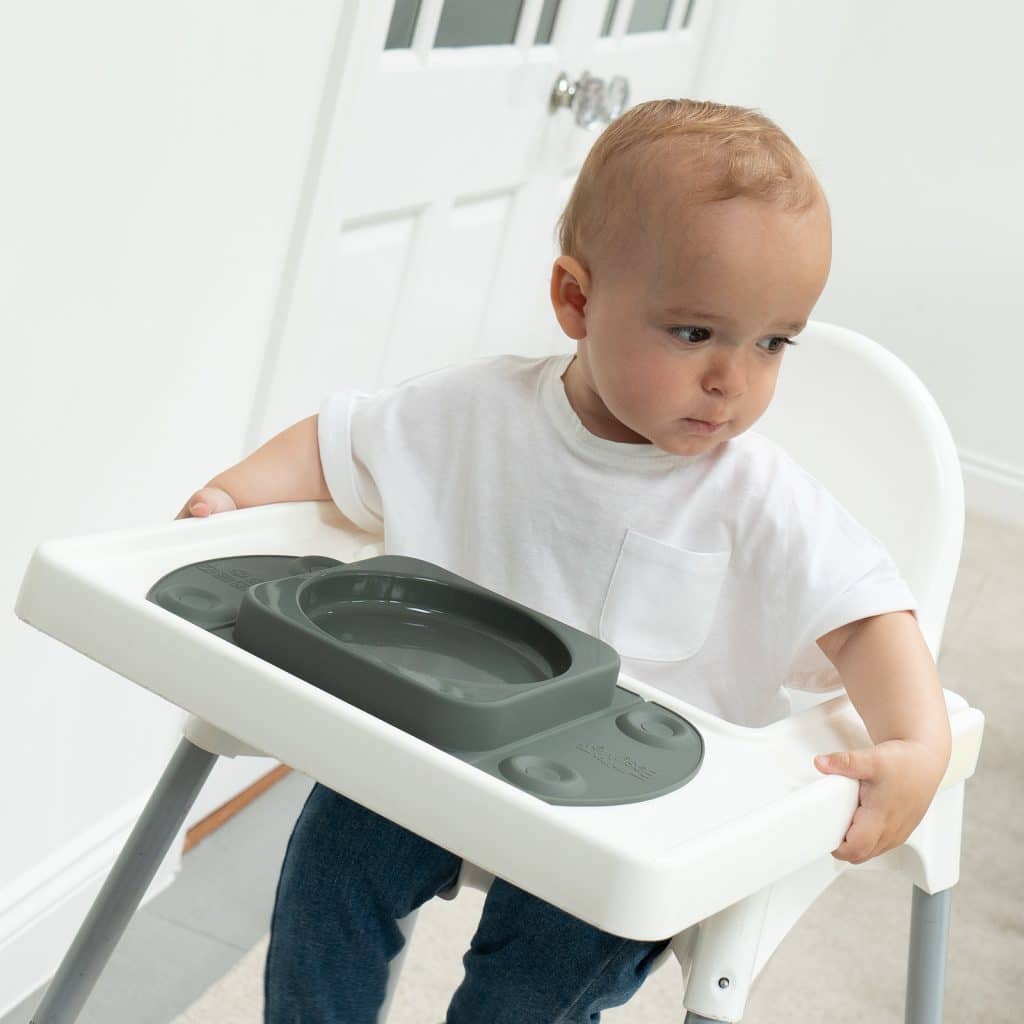 Easymat MiniMax Open Baby Suction Plate
Earn up to 29 points.$29.95
Easymat MiniMax Open Baby Suction Plate
Earn up to 29 points.$29.95
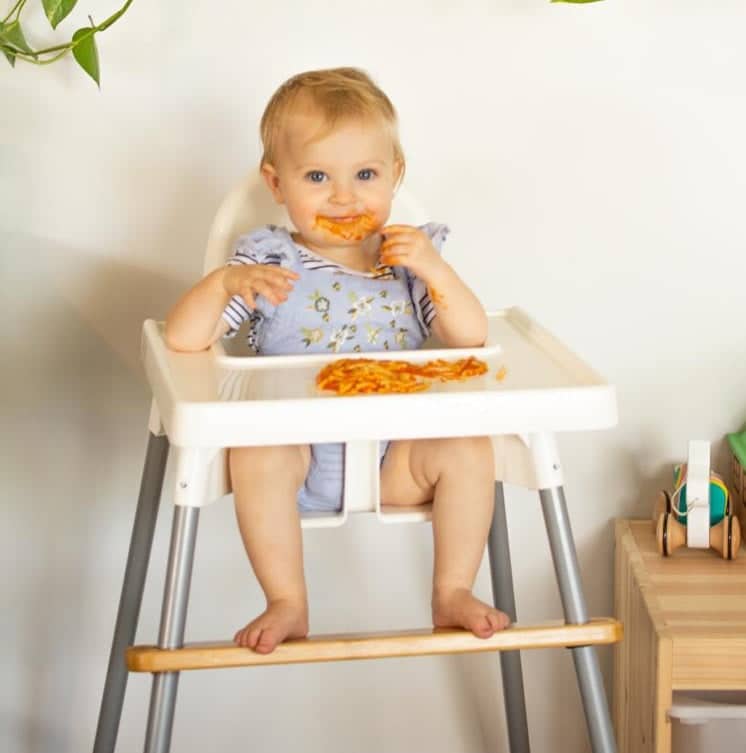 Footsi® - Eco-friendly Adjustable Highchair Footrest - The Woodsi Footsi®
Earn up to 34 points.$29.95 – $34.95
Footsi® - Eco-friendly Adjustable Highchair Footrest - The Woodsi Footsi®
Earn up to 34 points.$29.95 – $34.95
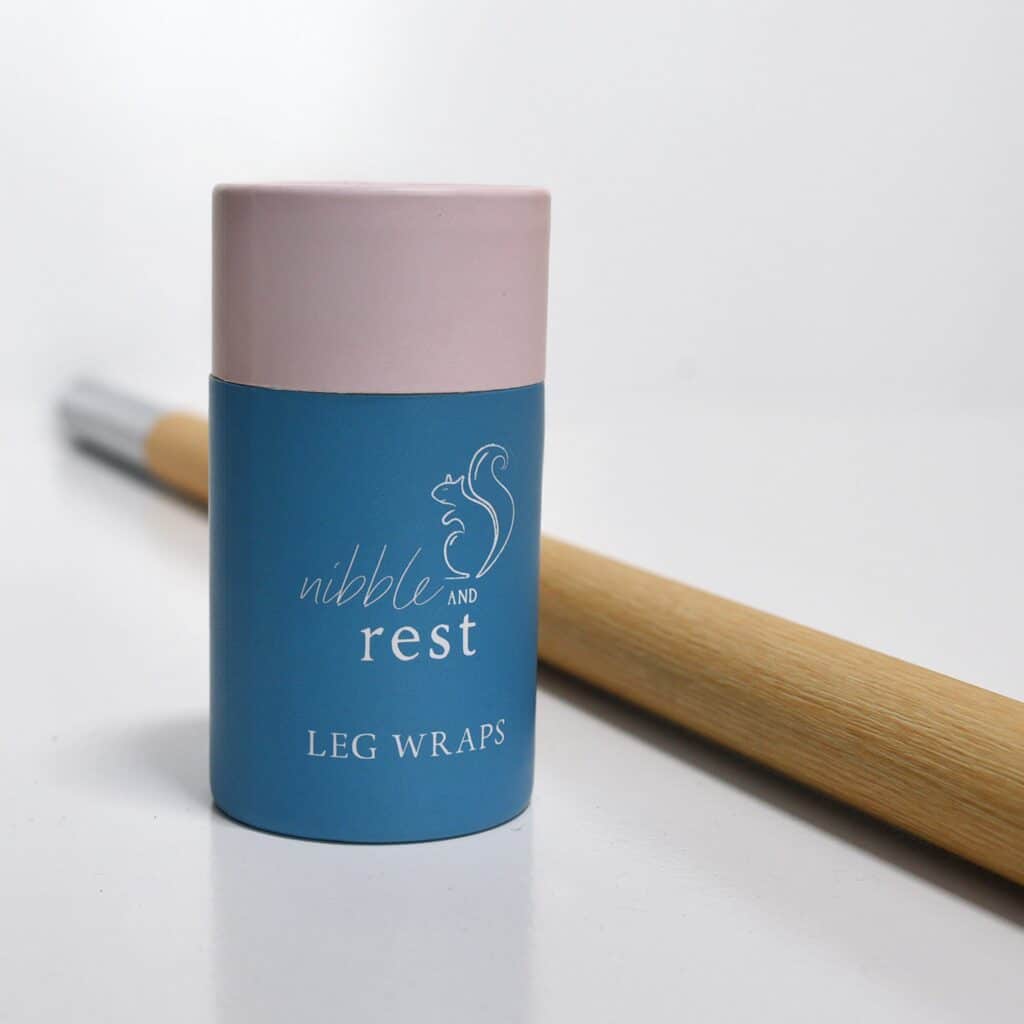 Leg wraps - KMART Highchair
Earn up to 19 points.$19.95
Leg wraps - KMART Highchair
Earn up to 19 points.$19.95

